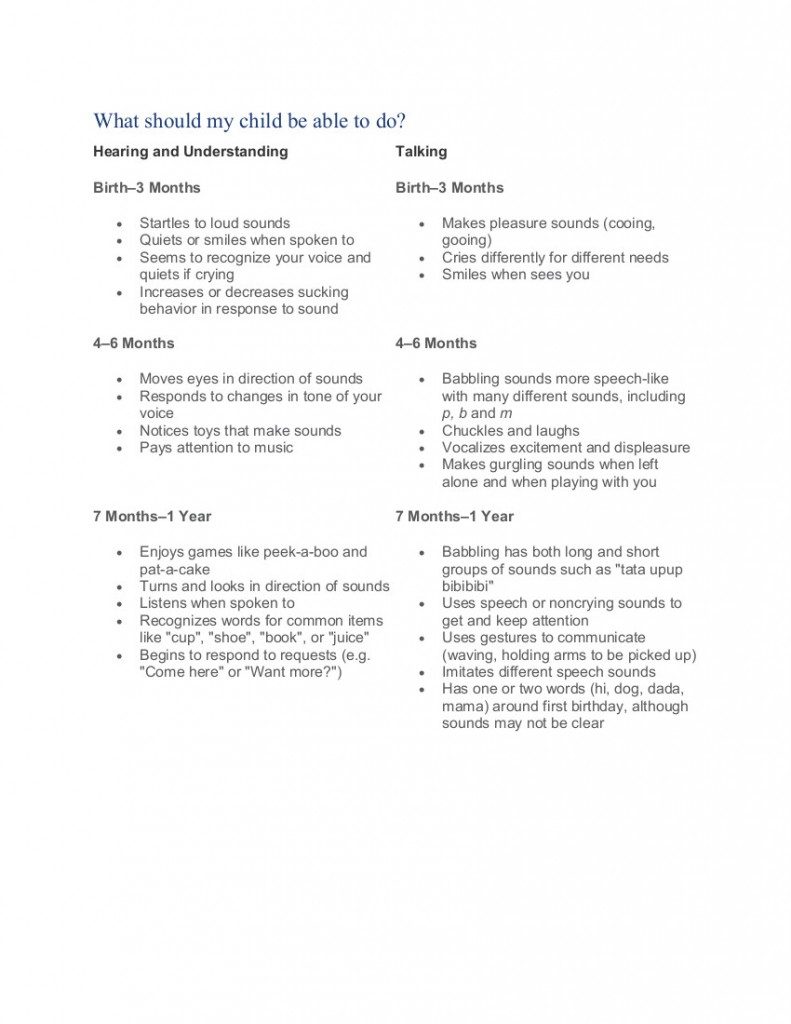When do kids begin talking? Should I be worried?
“Parents should take children for a speech evaluation any time they’re concerned,” says Diane Paul, PhD, Director of Clinical Issues in Speech-Language Pathology at the American Speech-Language-Hearing Association.
Check out the American Speech Language & Hearing Associations’ developmental chart below to see if your child is on track.
What can I do to help my child?
- •Check your child’s ability to hear, and pay attention to ear problems and infections, especially when they keep occurring.
- •Reinforce your baby’s communication attempts by looking at him or her, speaking, and imitating his or her vocalizations.
- •Repeat his or her laughter and facial expressions.
- •Teach your baby to imitate actions, such as peekaboo, clapping, blowing kisses, pat-a-cake, itsy bitsy spider, and waving bye-bye. These games teach turn taking that is needed for conversation.
- •Talk while you are doing things, such as dressing, bathing, and feeding (e.g., “Mommy is washing Sam’s hair”; “Sam is eating carrots”; “Oh, these carrots are good!”).
- •Talk about where you are going, what you will do once you get there, and who and what you’ll see (e.g., “Sam is going to Grandma’s house. Grandma has a dog. Sam will pet the dog.”).
- •Talk about colors (e.g., “Sam’s hat is red”).
- •Practice counting. Count toes and fingers.
- •Count steps as you go up and down them.
- •Teach animal sounds (e.g., “A cow says ‘moo’”).
This developmental chart is taken from the American Speech-Language-Hearing Association informational handout How Does Your Child Hear And Talk?

